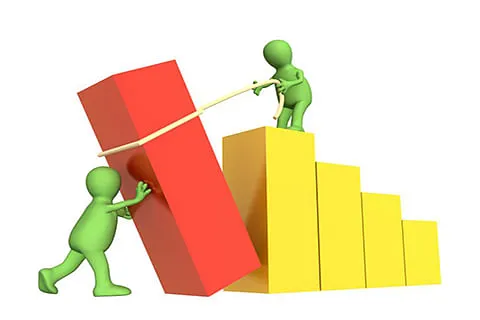As we know that the UN General Assembly held on September25, 2015 had adopted the document titled “Transforming our World with the 2030Agenda for sustainable development”. The Sustainable DevelopmentGoals (SDGs) seek to address not only the root causes of poverty but also theuniversal need for integrated social, economic and environmental dimensions ofdevelopment. Countries have the primary responsibility for follow-up andreview, at the national level with regard to the progress made in implementingthe goals and targets over the next 15 years.
Accordingly, the UN General Assembly in its 70th Sessionconsidered and adopted the 17 Sustainable Development Goals (SDGs) andassociated 169 targets for the next 15 years. The 17 SDGs came into force with306 distinct national indicators identified for monitoring the progress ofnational and global SDGs and associated targets
The government of India is strongly committed to agenda 2030including the Sustainable Development Goals. India has provided strongendorsement to the SDGs, giving a considerable fillip to agenda 2030. It iswidely agreed that India will play a leading role in determining the relativesuccess or failure of the SDGs, as it is the second most populous country inthe world. India is already taking significant strides towards the attainmentof SDGs,
In order to achieve the targets of sustainable developmentgoals there are number of challenges at this movement. Some challenges forachieving targets of sustainable development goals are as under:
(a) The realchallenge for achieving the Sustainable Development Goals is time frame toachieve the targets by year 2030. There are so many schemes and programmes ofthe union government and state governments which are yet to be linked with thegoals and the targets of the Sustainable Development Goals. Early the schemesof the union and state governments are linked with SDGs, the better results maybe possible to reach the target year 2030. NITI Aayog has already taken measuresteps to link all central schemes for better implementation and achieving thetargets of the sustainable goals by 2030. Some state governments are yet toeven start the process to link state schemes with goals due to lack of capacitybuilding and non-seriousness to link them with the goals and to achieve thetargets.
(b) The importantchallenge is statistics, as statistics play an important role to achieve thegoals with targets. There are so manyindicators which determine where the goals stand for and what steps should betaken to achieve targets of the prescribed goals. Further there are so manyindicators which have no statistics which results in the weakness of thetargets to implement and will not be able to achieve the goals well in the timeframe year 2030.
(c) Datachallenges is need to measure progress against SDGs rekindled an interest inthe quality and availability of data for measuring country’s performance,scheme design and management. Although some progress has been made instrengthening the statistical system, this progress is uneven and Indiacontinues to lack in uniform statistical systems. The domestic requirements forgood governance and accountability as a tool for evaluating governmentperformance have increased demand for reliable data. A national frameworkenable the development of reliable, high quality data on a range of subjects.Data is currently not available for some of the 306 National Indicatorsdeveloped by National Statistical Office (NSO) of Ministry of Statistics &Programme Implementation. However, to initiate the monitoring process, NITIAayog decided to prioritise some indicators on which state-wise data isavailable and consider those indicators for designing the SDG India Index. Itis duty of experts, scholars, researchers and institutions of state and centreto work together for developing methodology and generating statistics urgentlyof those indicators which have not been estimated but play an important rolefor sustainable development goals.
(d) Anotherimportant challenge is awareness of SDGs to every citizen so thatimplementation of schemes and programs of Central and State governments toprocesses properly and able to generate real statistics for indicators ofsustainable development goals. The real statistics will help to determine thetargets to be achieved in time frame by 2030.
There are many schemes and programmes of the Central and State governments which have shown strongimplementation of various schemes on papers only and the realty is different onground level due to the dishonesty, corruption, lack of knowledge of theschemes and programme implementation. It should be mass movement for allcitizens, establishments and governments to be honesty, accountable and freefrom any type of corruption for implementation of sustainable developmentsgoals and will meet out targets well intime frame along with rest of the UN member countries of the world.






